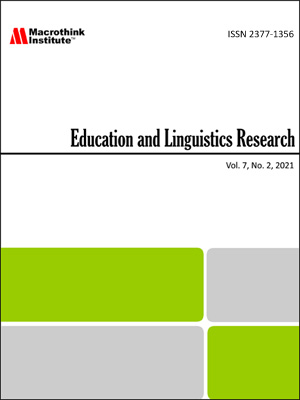Teachers’ Perspectives on the Role of L1 in Jordanian EFL Classes
DOI:
https://doi.org/10.5296/elr.v8i1.19378Abstract
This qualitative study explored English as a foreign language (EFL) teachers’ perspectives on first language (L1) use in the second language (L2) classroom. The study focused on Jordanian public secondary school EFL teachers and drew on Macaro’s (2001) three codeswitching positions—optimal (i.e., L1 use can enhance L2 learning), maximal (i.e., L1 use should be minimized in L2 learning), and virtual (i.e., L1 should never be used in L2 learning). Data were collected through a classroom observation and two rounds of interviews, one pre- and one post-observation. The findings suggested that teachers’ views on L1 use varied depending on two main factors: 1) students’ L2 proficiency, and 2) type of lesson. In terms of Macaro’s (2001) framework, teachers held an optimal view toward L1 use with low-proficiency students, yet a maximal view with higher-proficiency students. Similarly, teachers held an optimal position toward L1 use in grammar classes, yet a maximal position in reading classes and a virtual position in listening and speaking classes. The findings of this study are unlike Macaro’s (2001) results, which found that teachers hold a static position toward L1 use regardless of the proficiency of learners or lesson type. Finally, the present study found that teachers were aware of L1 overuse ramifications. The findings of this research may help L2 scholars, policy makers, and teacher-practitioners to understand the role of the L1 in the L2 classroom, particularly in the context of Jordan and similar EFL contexts.

